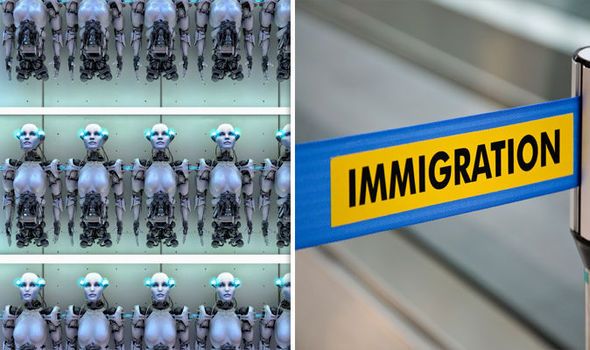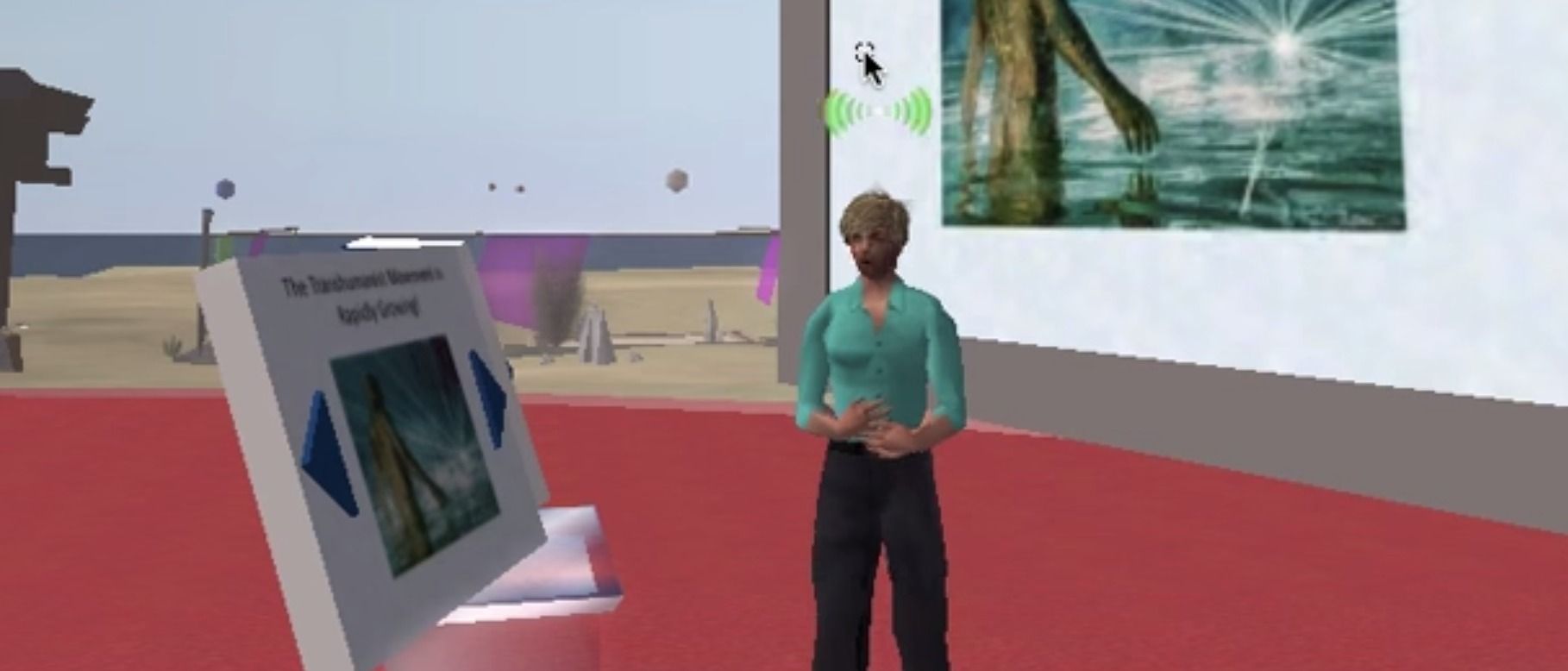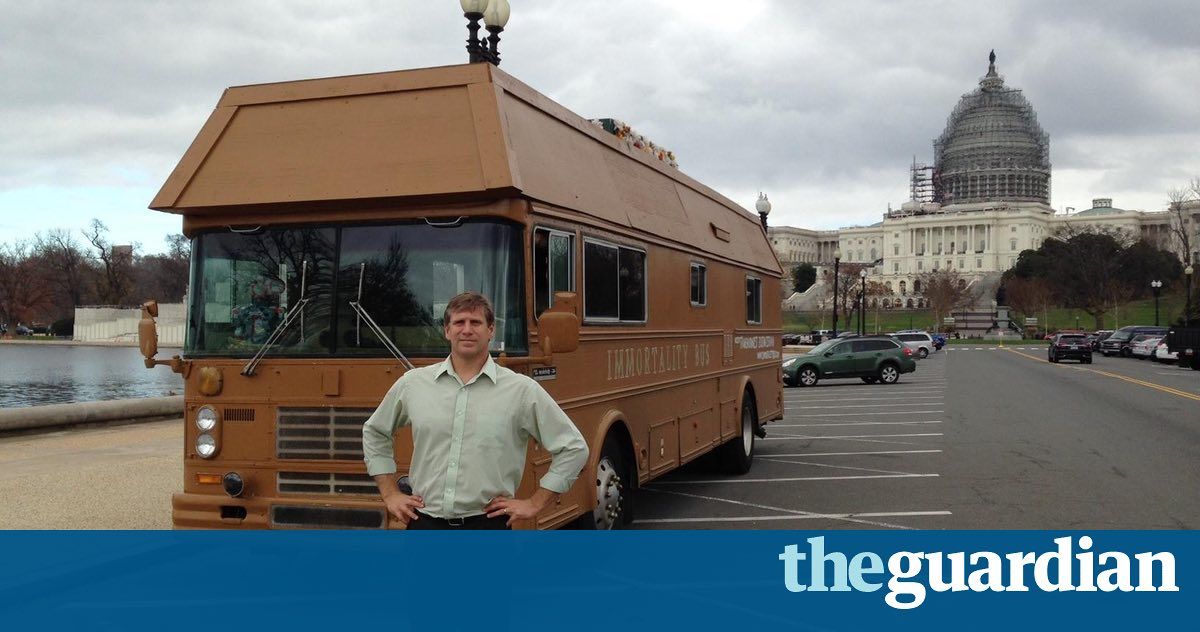How will immigration be different in the future? Especially with a possible Universal Basic Income and AI?
THE impending AI revolution may lead to the end of immigration, a leading expert has claimed.


According to The Clarion Project, a political information bureau that warns westerners of the growing threat from radical Islam, ISIS has published a ‘kill list’ that includes the names, addresses and emails of 15,000 Americans.
So far, this is interesting news, but it is not really new. I found ISIS, Hezbollah and Al-Qaida kill lists going back at least 8 years. This 2012 bulletin complains that NBC would not release the names contained on a kill list.
A kill list is newsworthy, and the Clarion article is interesting—but the article has more “facts” with which the publisher wishes to generate mob frenzy…
In a clear effort to whip up and direct audience indignation, it asks readers to take a one-question poll. Which answer would you choose?
Let’s ignore, for a moment, that the editorial comment appended to answer #2 involves a misleading assumption (i.e. that your safety is related to inclusion on the list and that you need or would be the focus of FBI protection). Even before this cheap tactical mis-direction, I am frustrated with the sleazy promotional and shock tactics of The Clarion Project (formerly, stopradicalislam.org).

This a pity—because the Clarion Project also creates and distributes valuable educational literature. For a few years, they were the credible standard in defining and issuing warnings about the dangers of radical Islam—especially as it is seeded and spread from within. The Clarion Project also produces terrific “wake-up” videos and documentary evidence about life under Sharia law and the shocking intolerance, misogyny and disrespect for human rights that characterize ISIS. It highlights the brutal tactics that emerge when regional governments are controlled by religious zealots. Like any repressive dictatorship, ISIS rules through fear instilled by bands of roaming thugs and by turning everyone into snitches.*
But the Kill List Poll points to a growing trend at Clarion. Four years ago, I objected to Meira Svirsky’s inflammatory report that criticizes a DOJ official for refusing to answer a complex and subtle question with a Yes-or-No response. The Clarion Project has a critical and noble goal. But pushing the emotional hot buttons of an audience by over simplifying or vilifying subtleties undermines the entire organization. In the end, it only demonstrates that they are bullies. And just like Donald Trump, bullying plays only to mobs. It is no the way to win hearts and minds.
My Answer to the Poll
Rationale
Both ISIS leaders and radical clerics have repeatedly declared that *all* Americans, American allies, Jews and non-believers may be killed on the spot or taken as sex slaves to pleasure suicide bombers and Jihadist soldiers.  They state that doing this fulfills Jihad and prophecy and is sanctioned by the Holy Qur’an. With this in mind, I the choice of poll responses is political, selfish and offensive. It assumes that readers are idiots…
They state that doing this fulfills Jihad and prophecy and is sanctioned by the Holy Qur’an. With this in mind, I the choice of poll responses is political, selfish and offensive. It assumes that readers are idiots…
The multiple choice answers are incomplete and misleading. Of course, Americans have a right to know if they are on a kill list—and, in fact, we already know We are all on that list!
About Radical Islam
The warning bell at the heart of Clarion journalism is an alarm that must be heard—very loudly. Radical Islam is a cancer and not just figuratively. It exhibits all earmarks of a spreading cancer that invades and attaches itself to its neighbors while building offensive outposts far from the region that it started. It has not yet been contained and excised. It presents a significant ongoing threat to our safety, our health and our wealth.
—Philip Raymond is a Lifeboat board member and columnist. He hosted The
Bitcoin Event and is co-chair of the Cryptocurrency Standards Association
* I could illustrate my point with photos of men being burned in a cage, the abduction of preteen school girls from their homes (they were give to soldiers), a child slitting the throat of captives, or a women having her nose cut off because she was raped by a stranger. After all, in the twisted world of radical Islam, anyone who is different, unique gay, Christian, or not in agreement with the local Imam are to be tortured and killed.
But I can similarly point to even this comparatively mild video. It shows a Turkish music store under attack last week (June 2016), because a group of thugs suspects that the band signing autographs represents secular hedonism—or that that fans must be consuming alcohol during Ramadan.

My new story for Vice Motherboard on the future of political campaining:
Lest we think future elections are all about the candidates, perhaps the largest possibility on the horizon could come from digital direct democracy—the concept where citizens participate in real time input in the government. I gently advocate for a fourth branch of government, in which the people can vote on issues that matter to them and their decrees could have real legal consequence on Congress, the Supreme Court, and the Presidency.
Of course, that’s only if government even exists anymore. It’s possible the coming age of artificial intelligence and robots may replace the need for politicians. At least human ones. Some experts think superintelligent AI might be here in 10 to 15 years, so why not have a robot president that is totally altruistic and not susceptible to lobbyists and personal desires? This machine leader would simply always calculate the greatest good for the greatest amount of people, and go with that. No more Republicans, Democrats, Libertarians, Greens, or whatever else we are.
It’s a brave new future we face, but technology will make our lives easier, more democratic, and more interesting. Additionally, it will change the game show we go through every four years called the US Presidential elections. In fact, if we’re lucky—given how crazy these elections have made America look—maybe technology will make future elections disappear altogether.
Zoltan Istvan is a futurist, author ofThe Transhumanist Wager, and presidential candidate for theTranshumanist Party. He writes anoccasional columnfor Motherboard in which he ruminates on the future beyond natural human ability.
Topics: the transhumanist wager, politics, Presidential elections, VR, AR, drones, tech, second life, Hillary Clinton, bernie sanders, Donald Trump, America.
This 1-min video centered on transhumanism aired across the country today on many Fox channels. It’s part of a new news show for millennials:
Presidential candidate Zoltan Istvan is putting science at the forefront of his politics.
On social? Let’s be friends! @top30tv

An article & short interview on implants with Sputnik:
The US Navy has held talks with “Transhumanist” and presidential candidate Zoltan Istvan, who told Radio Sputnik about the US military’s concerns.
Last week it emerged that US naval officers have held discussions with Zoltan Istvan of the Transhumanist political party, who is also running as a candidate for the US presidency.
He advocates fitting human beings with technology, including microchips, to boost brain power or enhance physical attributes.
Istvan himself has a microchip in his hand that he uses to give out business cards, send text messages, or start his car.
Steps moving forward to make enhance human intelligence real — definitely would mean a major leap forward in achieving Kurzweil’s and Zolstaf Zoltan Istvan’s super humans.
Transhumanist Zoltan Istvan, from Calfornia, and presidential candidate, met with senior officials from the US navy to discuss policies on how to deal with microchip implants (pictured).

A new article considering chip implants:
Among other tragedies in Florida recently gripping America’s attention, a 2-year-old boy was snatched away from its parents by an alligator at Walt Disney World on Wednesday. I have a similar-aged toddler myself, and I followed this heartbreaking story closely. Unfortunately, it ended as horribly as it began, with the recovery of a dead child.
My presidential campaign with the Transhumanist Party is based on advocating for radical science and technology to make the world a better place for humans. As a result, for nearly two years I have been advocating for using chip implants in people to help keep them safer. Chip implants are often just the size of a grain of rice and can be injected by a needle in a nearly pain-free 60-second procedure. The implants can do a multiple array of things depending on the type. And much of the technology has been used in pets for over a decade, so it’s already been shown to be relatively safe.
I have a RFID NFC chip in my hand that is programmed to send a text saying “Win in 2016” to people who have the right type of phone. To get the text, all you have to do is put your phone by my hand. My chip can also start a car with the right software, hand out a business card electronically, or give out my medical information.
But the future of implants—as well as other wearable tech—may end up being most useful for the safety it provides.


USA Today story:
As co-writer for USA TODAY’S “For the Record,” I’ve been writing about the campaigns of Republican, Democratic, Libertarian and Green presidential candidates since the newsletter’s launch last summer. But the first presidential candidate to reach out to me was Zoltan Istvan, the Mill Valley, California-based Transhumanist Party candidate who foresees the merger of humans and technology in the very near future. I spoke by phone with Istvan last week.
Big promises are the hallmark of presidential campaigns.
Four years ago, Newt Gingrich said he’d make the moon the 51st state by 2020. Bernie Sanders has proposed free college education for every American. Donald Trump has promised to build a 1,900-mile wall on the border with Mexico.
Transhumanist Party candidate Zoltan Istvan wants to conquer death.
